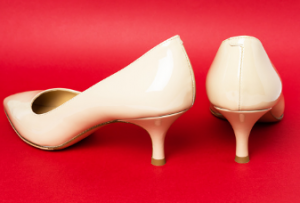If you’re short, wearing high heels can make you appear taller. But they can also cause you to feel uncomfortable, especially if you are over five-foot-eight. In addition to these advantages, high heels can also give you a boost in confidence. Women shorter than five feet eight should avoid high heels because they can cause back pain and hammer toe.
 Reduced risk of falling
Reduced risk of falling
The type of shoes you wear when a fall can significantly impact your risk of falling. For example, wearing high heels, slippers, and shoes with slippery soles can make walking difficult and increase the chance of a fall. Fortunately, there are ways to reduce the risk of a fall. The first step is to keep your footwear in good condition. For example, avoid wearing high heels or shoes stretched out or too heavy.
Secondly, wear well-fitted shoes. High-heeled shoes are unsuitable for balance, ankle stability, and posture. High-heeled shoes can also lead to a fall. Low-heeled shoes with a heel no higher than one inch are safer than higher heels. Also, avoid loose or stretchy shoes, which will change your gait and affect your balance. Lastly, throw away worn-out footwear right away.
Reduced risk of back pain
Studies have shown that wearing Wildfire low heels causes the curve in the low back to increase by the same amount as the height of the heel. This change in shape can cause various problems, including sprained ligaments and tendonitis. Poor posture can also cause back pain, including spondylolisthesis, where the vertebrae shift forward. Additionally, wearing high heels can cause knee and hip pain due to the shift in balance. High heels also increase the lordotic curve, which puts abnormal stress on the joints and soft tissues of the back.
While high-heeled shoes are known to increase the risk of back pain, some studies have indicated that wearing low-heeled shoes reduces the risk. However, studies have also shown that wearing high-heeled shoes can lead to shortened calf muscles and thickened tendons. They also cause the back to hunch forward, leading to other issues, such as sciatica.
High heels are not recommended for long periods, as they cause muscle overuse and back pain. They can also cause stiff hips and legs and can cause lower back pain. The high heels also put pressure on the plantar fascia, a ligament that runs down the sole and connects to the hamstrings, pelvis, and lower back.
Despite these concerns, the study showed no difference in the incidence of back pain in women who wore high-heeled shoes and those who wore low-heeled shoes. It was even though both groups of women spent more than six hours per day standing. Some researchers believe that prolonged standing may lead to lower back pain.
Reduced risk of hammer toe
Wearing shoes with low heels can help reduce the risk of hammer toe. People who wear high heels for extended periods should reduce the time they spend wearing them. In addition, people who have diabetes and have weakened muscles are more prone to developing a hammer toe. A splint can relieve pain and help prevent the hammer toe from occurring.
X-rays can help diagnose hammer toe. They can provide images of the thick, fibrous tissue inside the toe. It can also help determine the correct treatment for the hammer toe. If the condition is diagnosed early, treatment can be conservative, not requiring surgery. However, if you notice the problem has progressed, see a doctor immediately. Again, X-rays can help diagnose the condition accurately.
A hammer toe can result from an injury or a genetic muscle imbalance. However, people who wear high heels are at a higher risk of developing it because they wear shoes with a narrow toe box. This narrowness forces the toes into an unnatural position and puts pressure on the ball of the foot. High heels also increase the stress on the foot and increase the bend in the toe.
Other factors that increase the risk of hammertoe include poor footwear fit, anatomical problems, and previous trauma to the toe. For example, poor-fitting shoes can cause deformities in the MTP joint, where the toe’s base attaches to the rest of the foot. In addition, people with diabetes and peripheral neuropathy are at higher risk of developing hammertoe.